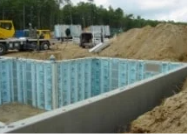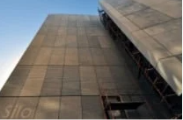Unit-2
History of Civil engineering
Q1) What is the History of Civil engineering?
A1) Civil Engineering has been an aspect of life than the beginnings of the human being. The initial performances of Civil engineering commenced between 4000 and 2000 BC in Ancient Egypt and Mesopotamia (Ancient Iraq) when humans started to freeing a nomadic being, thus causing a need for the construction of shelter.
Q2) Describe Early constructions and developments over time?
A2) The history of construction overlays many other fields like structural engineering and trusts on subdivisions of science like archaeology, history, and architecture to detect how the builders existed and recorded their accomplishments.
Those fields permit the studies constructed buildings and other structures built subsequently prehistory, the tools used, and the altered uses of building materials.
History of the building is developing by altered developments in time, marked by key principles taking durability of the materials used, the increasing of height and span, the degree of control trained over the interior environment, and as a final point the energy nearby to the construction process.
A ration has changed since 1965 and the construction industry is no exclusion.
Probably the largest guidance of change in the industry.
Q3) Explain Ancient monuments.
A3) Ancient Monument means any structure, erection or monument, or any tumulus or place of interment, or any cave, rock-sculpture, inscription or monolith which is of historical, archaeological or creative interest and which stayed in being for not less than 100 years
A "Monument of National Importance" is nominated by the Archaeological Survey of India and includes the following.
1) The remains of an ancient monument.
2) The site of an ancient monument.
3) The land on which there are barriers or protective casing structures for preserving the monument.
4) Land by means of which people freely admittance the monument.
It is UNESCO's World Heritage Site in India due to rocky and chariot structures.
It involves more than 500 monuments are a collection of beautiful temples, forts, aquatic structures, ancient market streets, royal pavilions, bastions, royal platforms, and investment buildings.
Q4) Write any 3 Most Famous Historical Monuments of India.
A4)
1) Taj Mahal, Agra.
2) Mysore Palace, Mysore.
3) Victoria Memorial, Kolkata.
Q5) What is Modern Engineering Marvels in the World?
A5) As an acknowledgment of the greatest civil engineering achievements of the 20th century, the American Society of Civil Engineers (ASCE) has nominated the Wonders of the Modern World.
The international wonders have modern society’s ability to achieve unattainable feats, inspiration inaccessible heights, and disdain the notion "it can't be done."
ASCE honored the following civil engineering marvels:
1) Channel Tunnel (England & France)
2) CN Tower (Toronto)
3) Empire State Building (New York)
4) Golden Gate Bridge (San Francisco)
5) Netherlands North Sea Protection Works (Netherlands)
6) Panama Canal (Panama)
The Society wanted nominations from civil engineering societies and distinguished engineering experts from the world.
From their harmony emerged the Seven Wonders, which were judged on factors such as pioneering of design and construction, which helps to humanity, and engineering contests that were astonished.
The list evokes the storied wonders of the ancient world, which first illustrated humanity's desirability with engineering works that seemingly defied the limits of nature.
While only a few of the original wonders remain, the modern wonders indicate civil engineering's legacy to the 20th century.
Modern Engineering Marvels in the World:
1) Millau Viaduct (Millau, France)
2) The Venice Tide Barrier Project (Venice, Italy)
3) National Stadium a.k.a. “Bird's Nest” (Beijing, China)
4) Palm Islands (Dubai)
5) The Large Hadron Collider (underground in Geneva, Switzerland)
6) Channel Tunnel.
Q6) What are the Various materials of construction?
A6) Building material is slightly material used for construction purposes such as materials for house building.
Wood, cement, aggregates, metals, bricks, concrete, clay are the utmost common type of building material used in construction.
The choice of these is based on their cost efficiency for building projects.
Many naturally occurring substances, such as clay, sand, wood, and rocks, even branches and leaves used to construct buildings.
Apart from naturally happening materials, several man-made products are in use, some more and some less synthetic.
The manufacture of building materials is a recognized industry in many countries and the use of these materials is normally segmented into specific field trades, such as carpentry, plumbing, roofing, and insulation work.
1) Rock:
2) Wood:
3) Brick and Block:
4) Concrete:
5) Metal:
6) Glass:
7) Ceramics:
8) Plastic:
Q7) What are the different types of Methods of construction?
A7)
Types of Modern Methods of Construction:
1) Precast Flat Panel System
2) 3D Volumetric Modules
3) Flat Slab Construction
4) Precast Cladding Panels
5) Concrete Wall and Floors
6) Twin Wall Technology
7) Precast Concrete Foundation
8) Concrete Formwork Insulation
9) Precast Flat Panel System
1) Flat Slab Construction:

2) Precast Concrete Foundations:

3) Precast Cladding Panels:

Q8) What are the two types of civil engineers?
A8) Generally, civil engineers fall into two types: consulting engineers and contracting engineers.
1) Undertaking technical and feasibility studies with site investigations
2) Using a series of computer software for developing detailed designs
3) Undertaking composite calculations
4) Liaising with clients and a variety of professionals including architects and subcontractors
5) Compiling job specs and supervising tendering procedures
6) Resolving design and development problems
7) Handling budgets and project resources
8) Scheduling material and equipment purchases and deliveries
9) Assessing the sustainability and environmental impact of projects
10) Ensuring projects run smoothly and structures are completed within budget and on time.
Contractors, on the other hand, regularly work shifts and weekends and are outside in all weather.